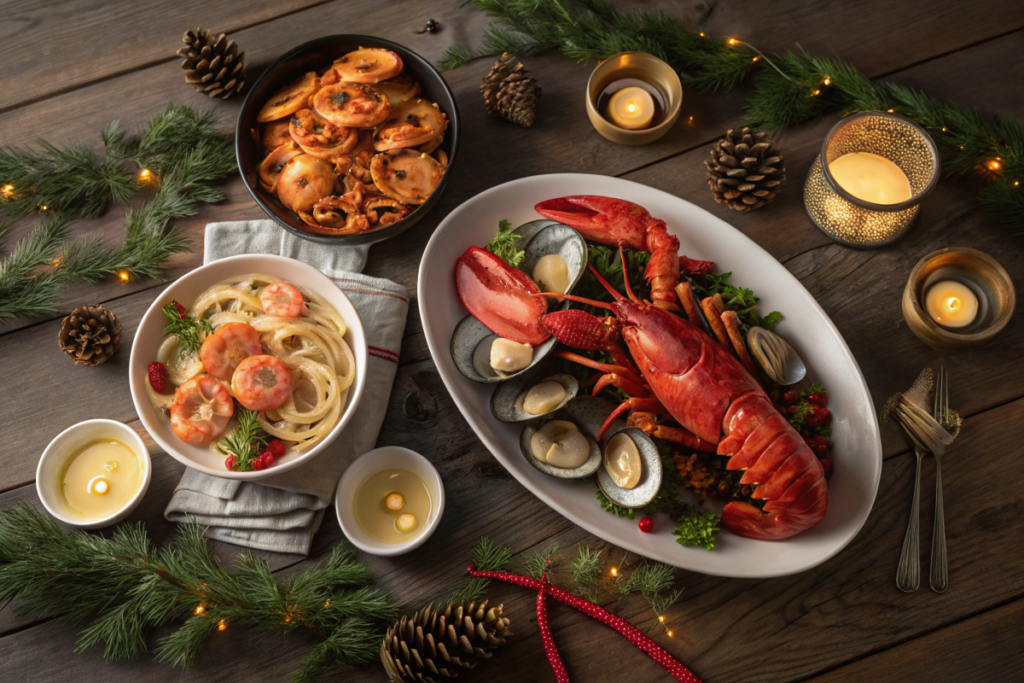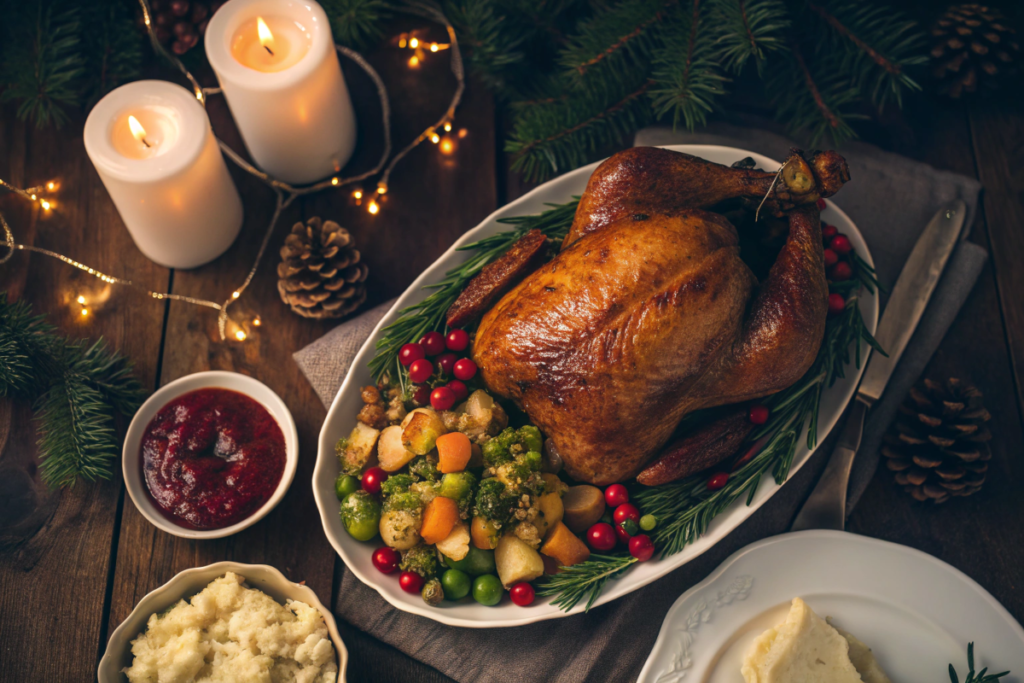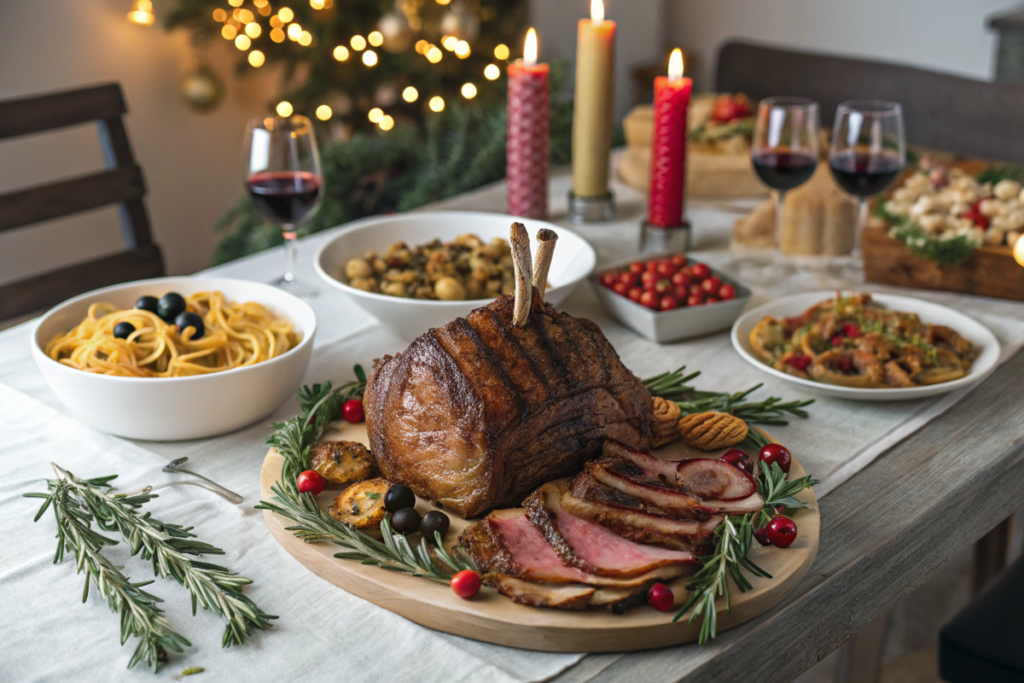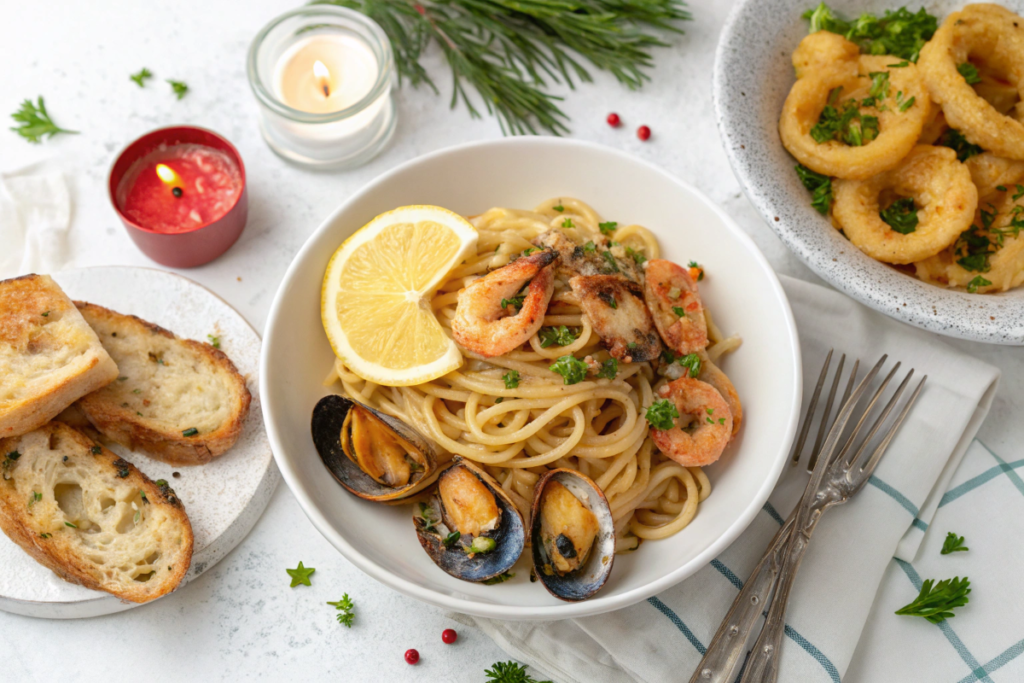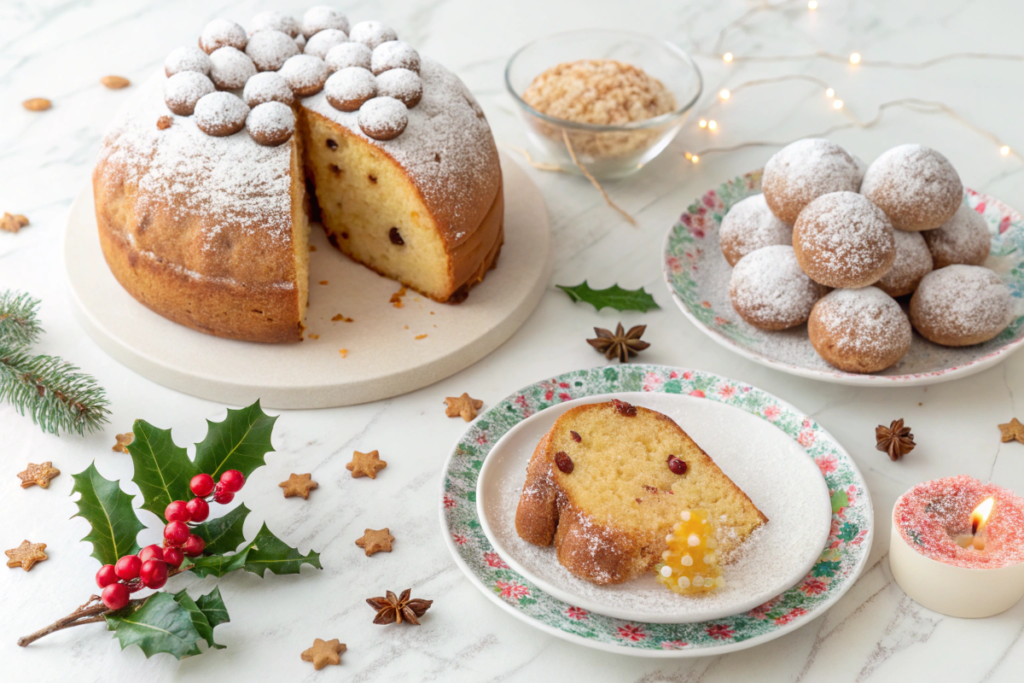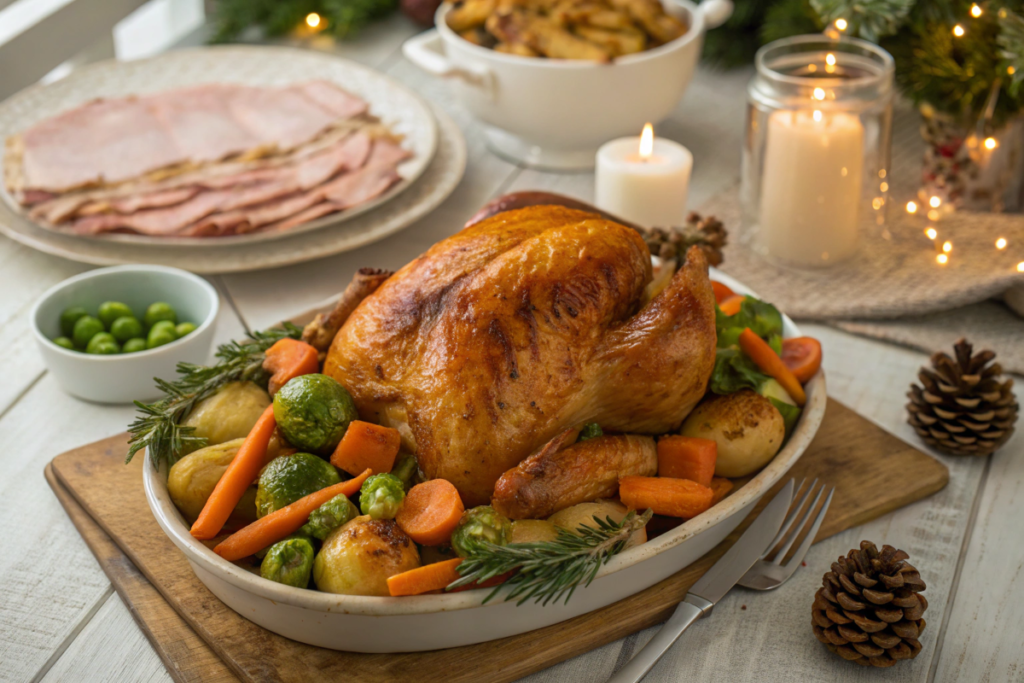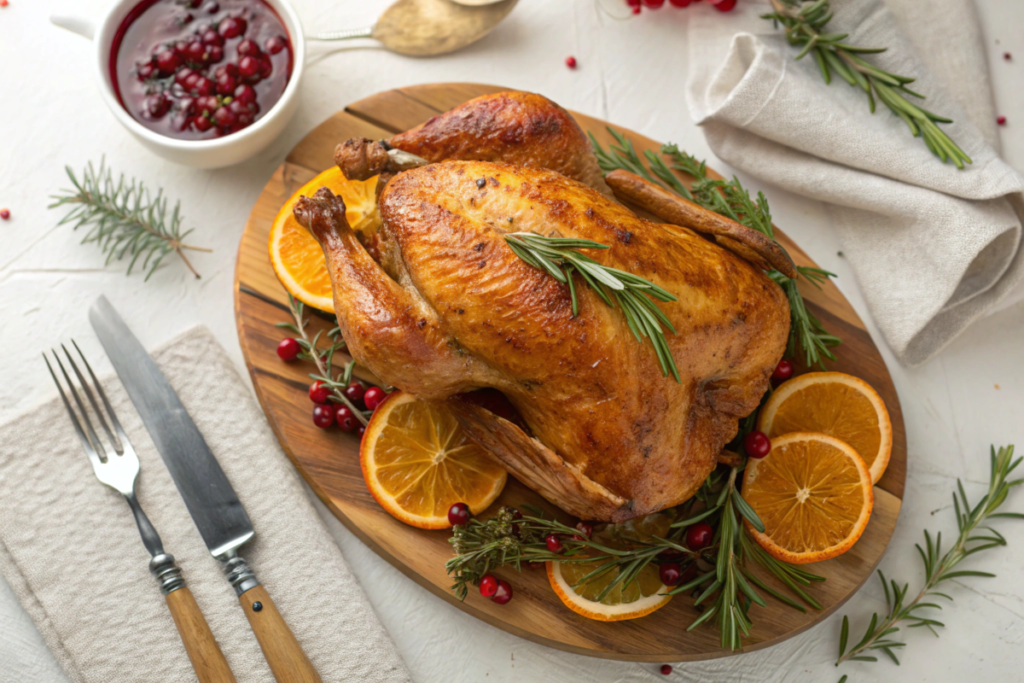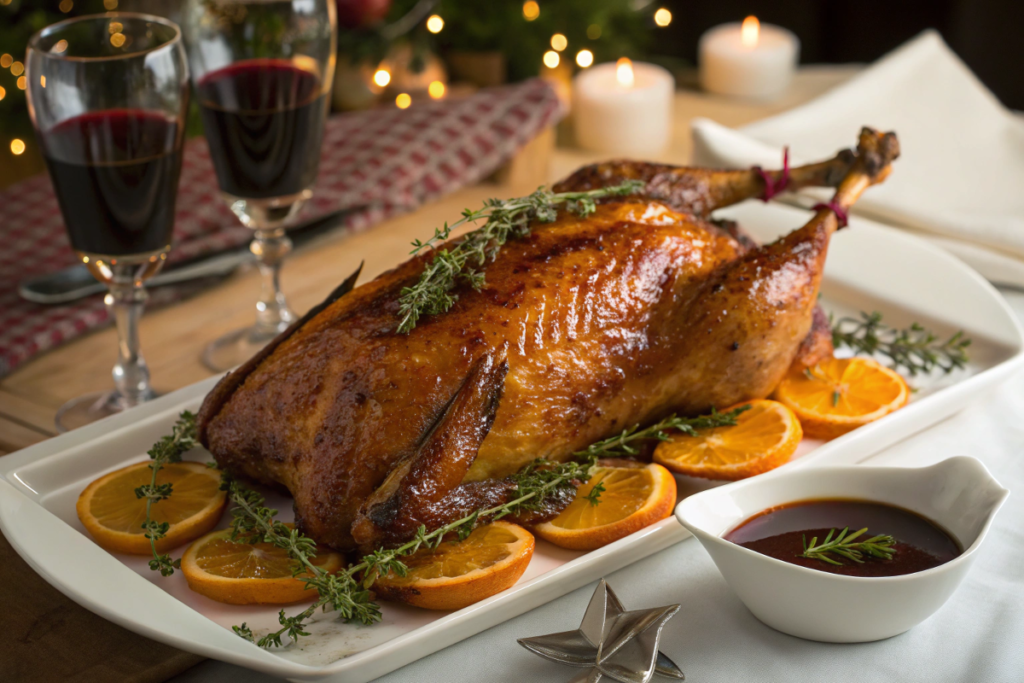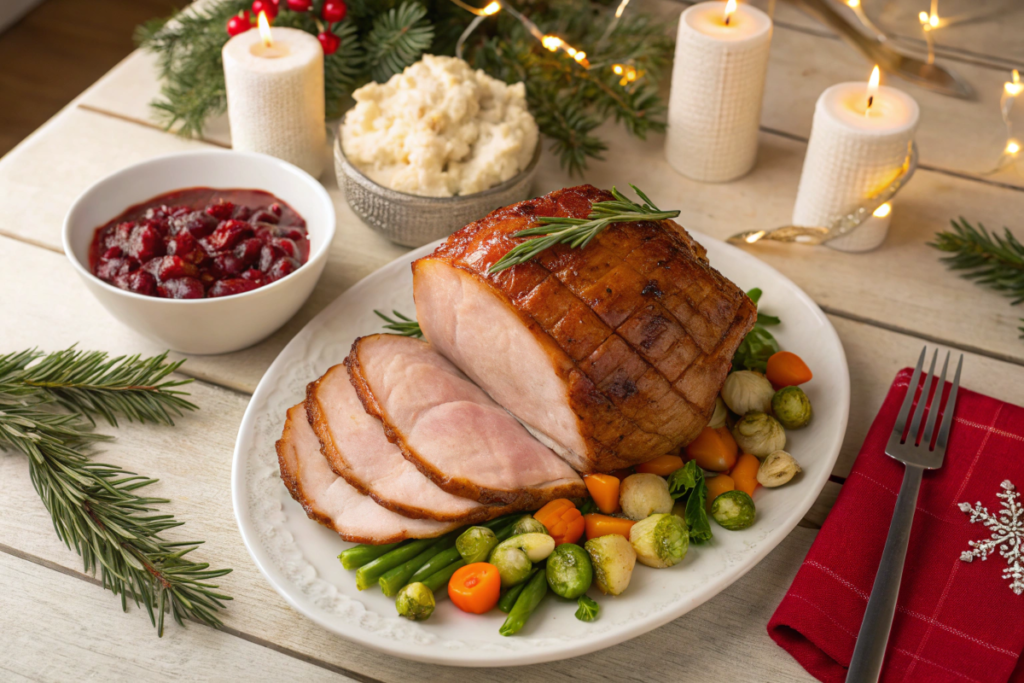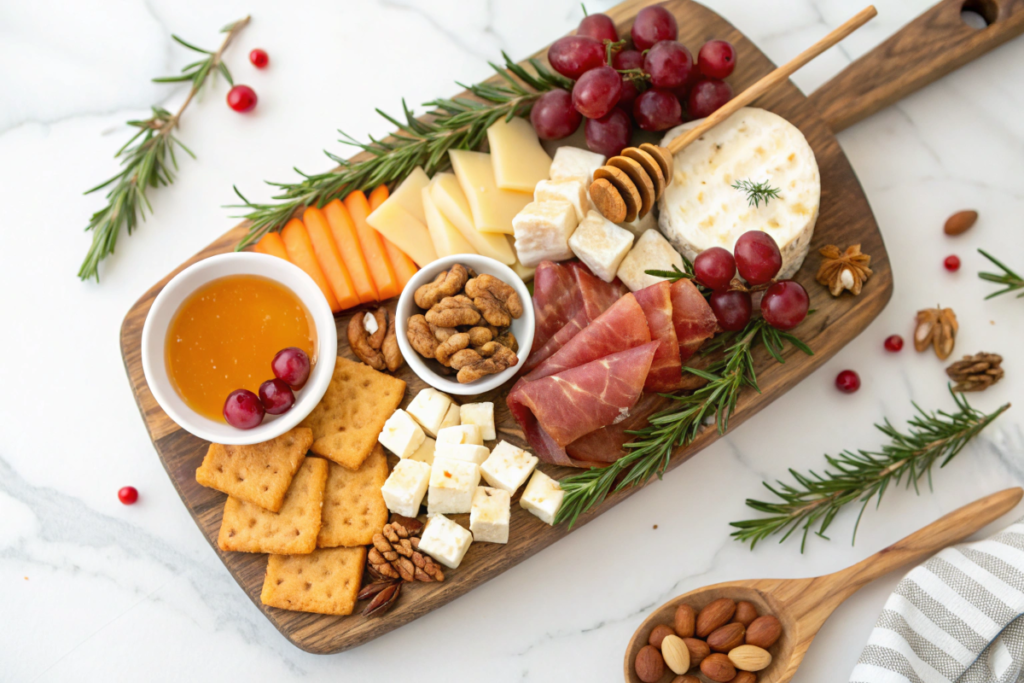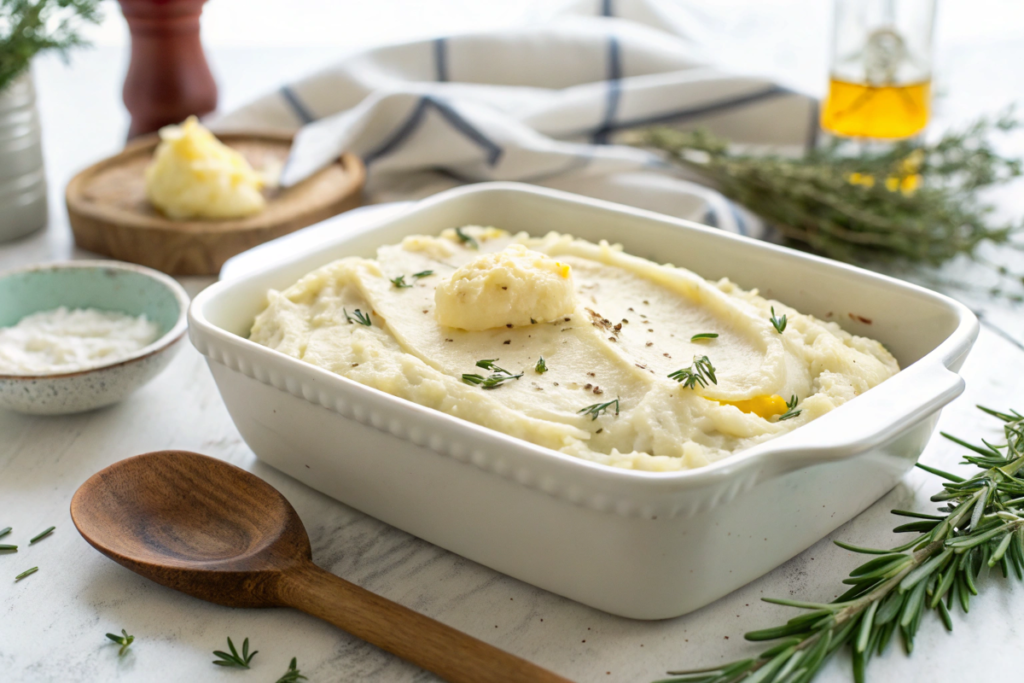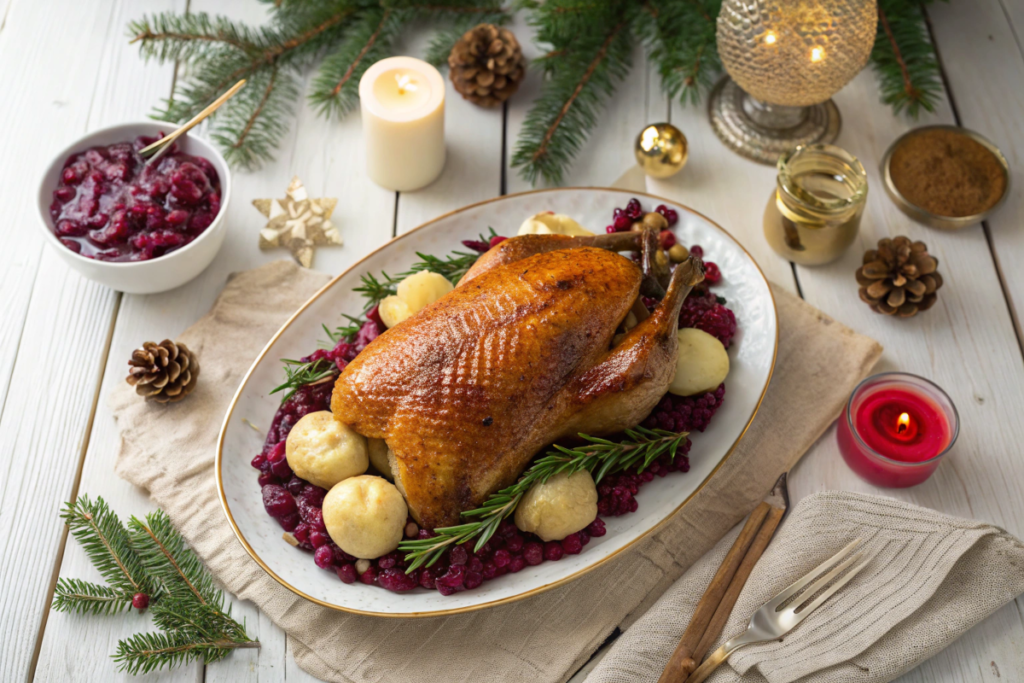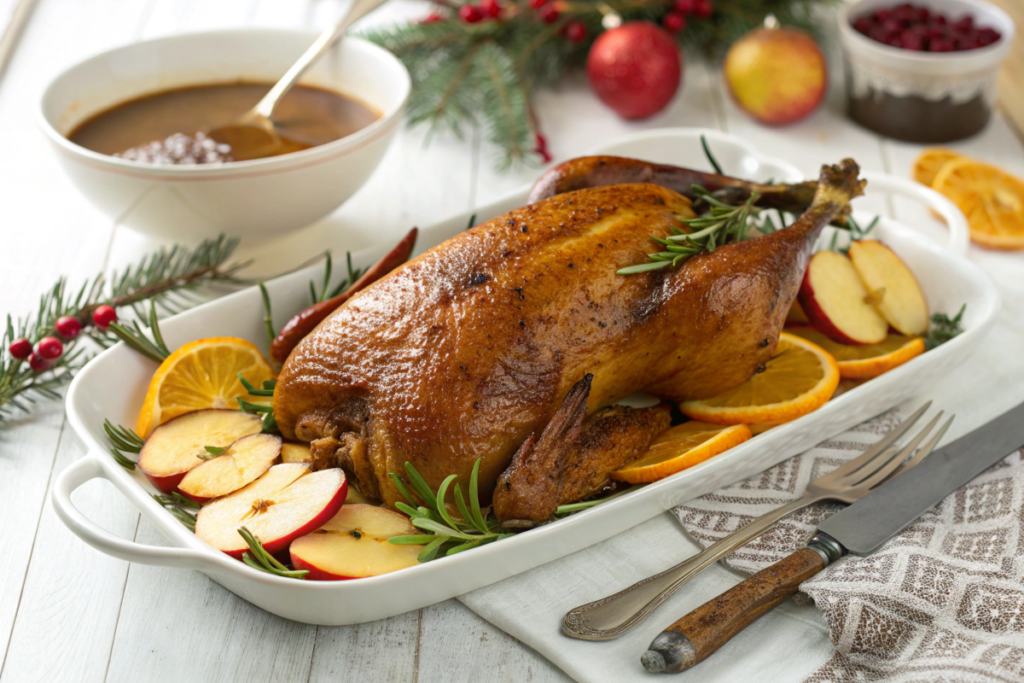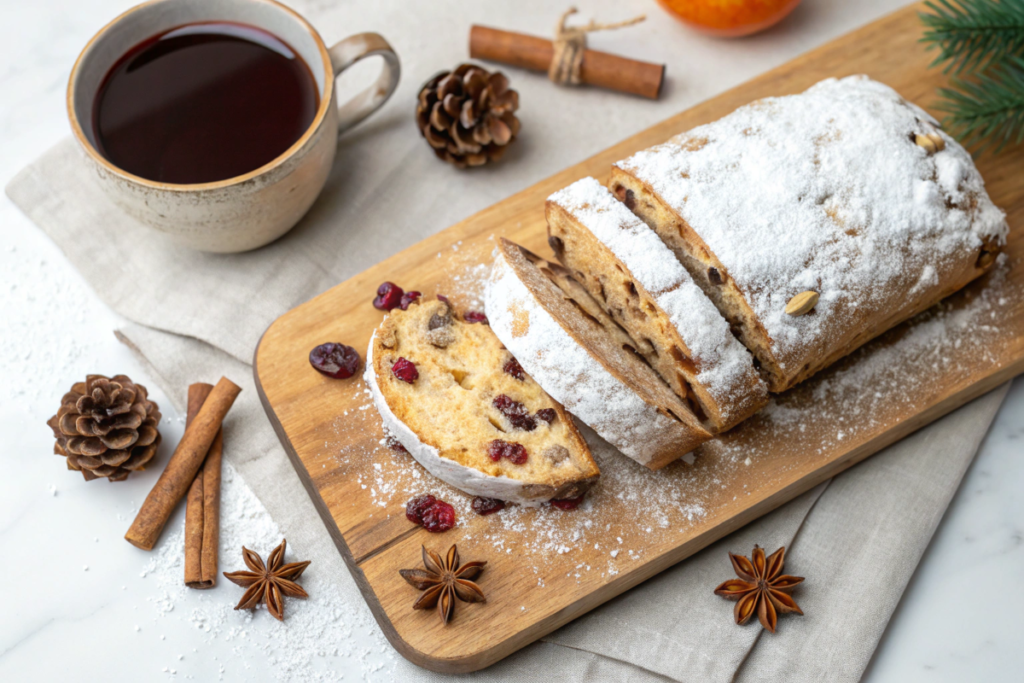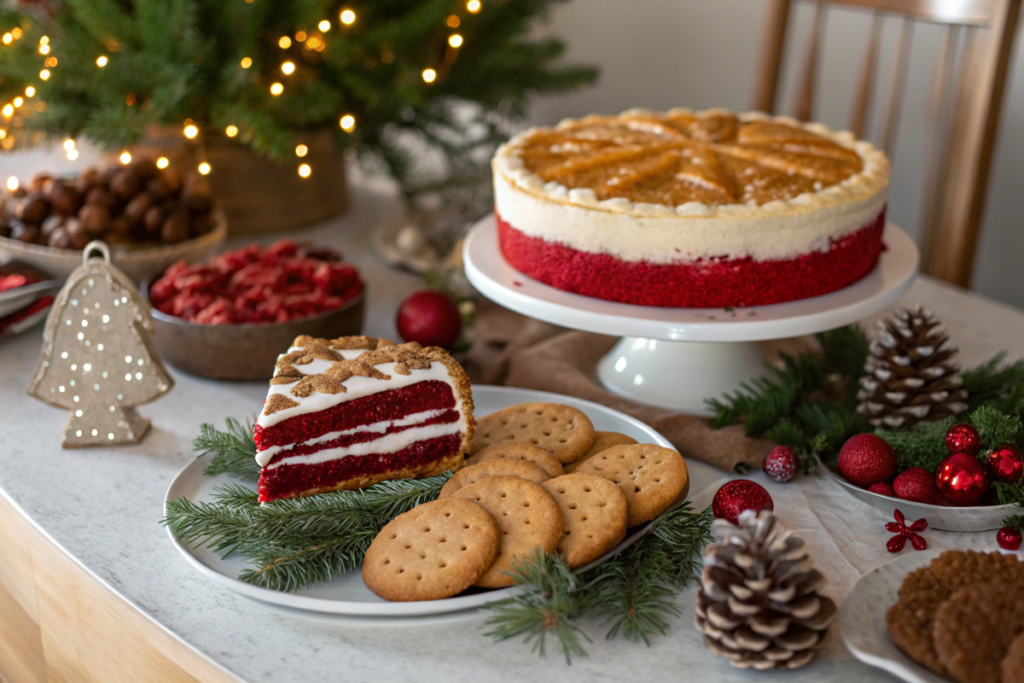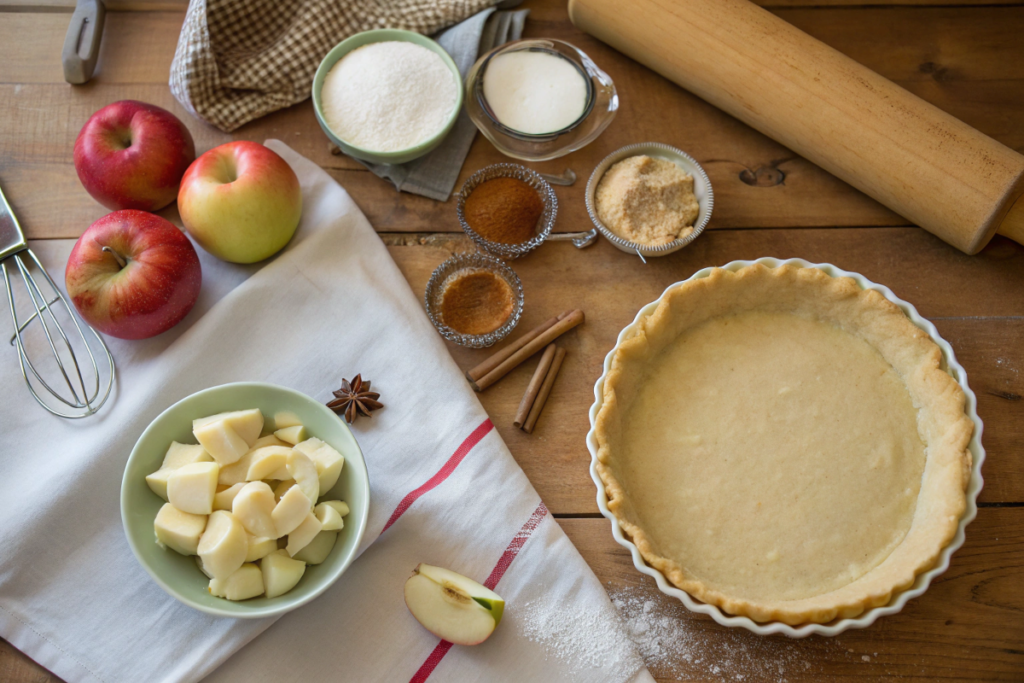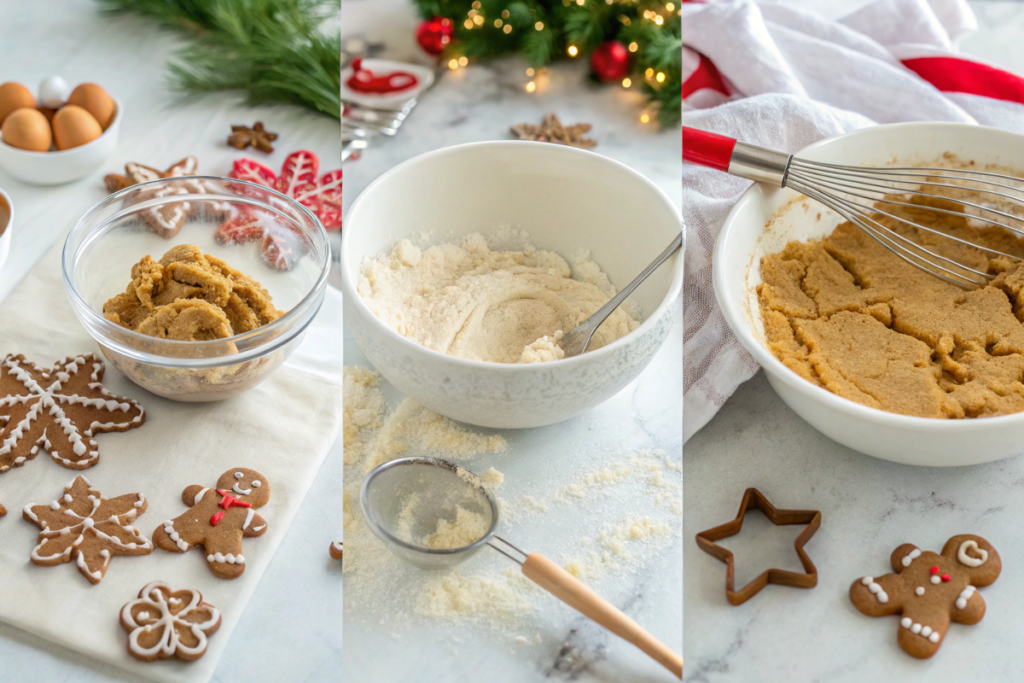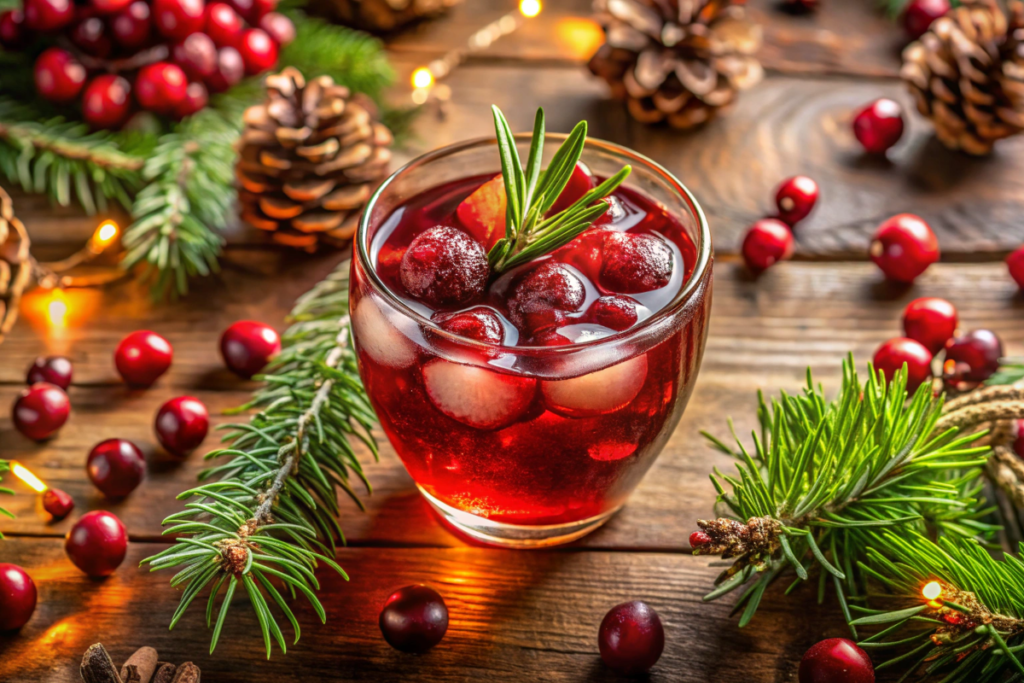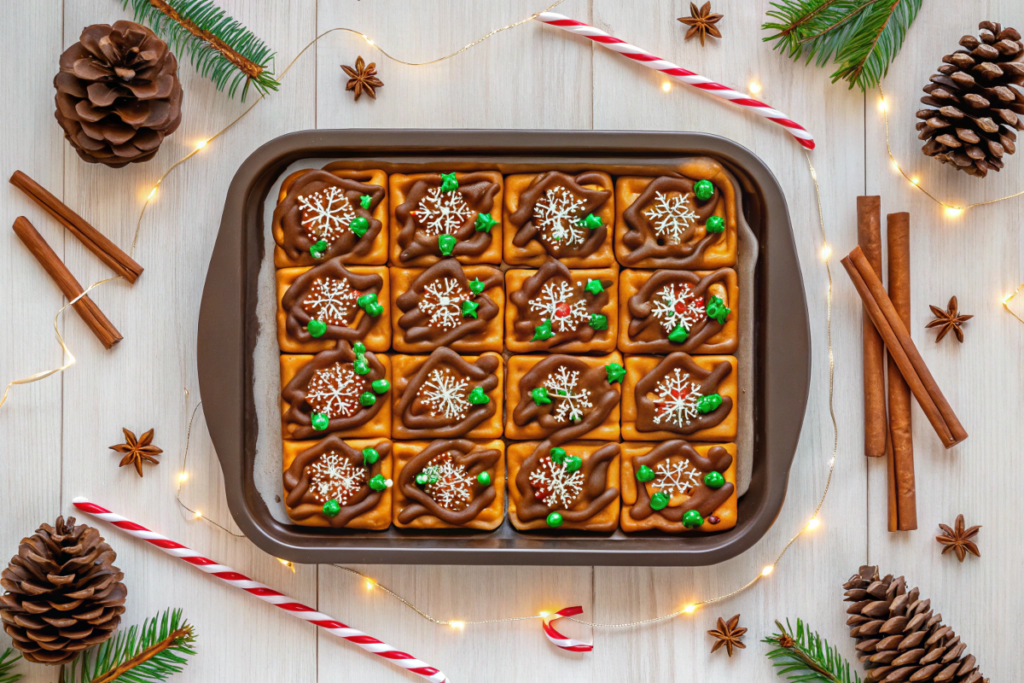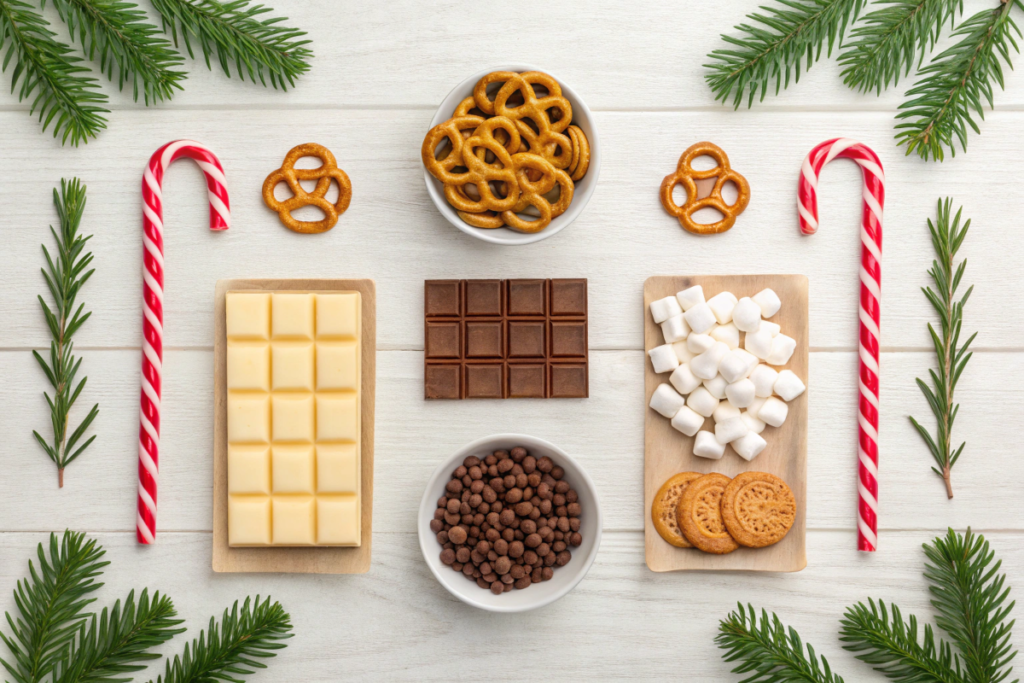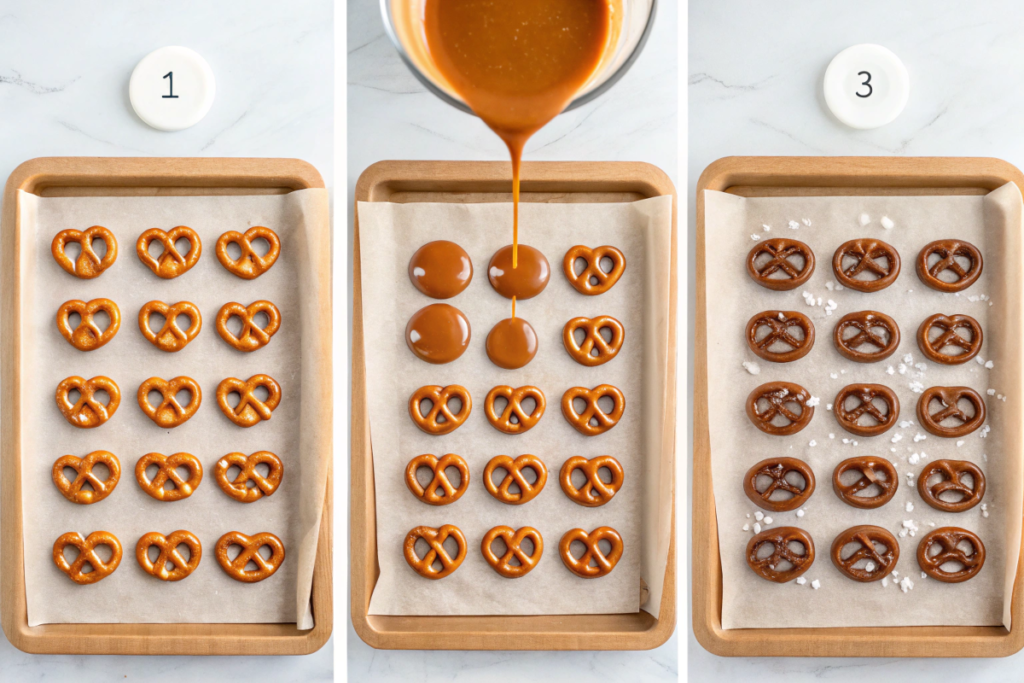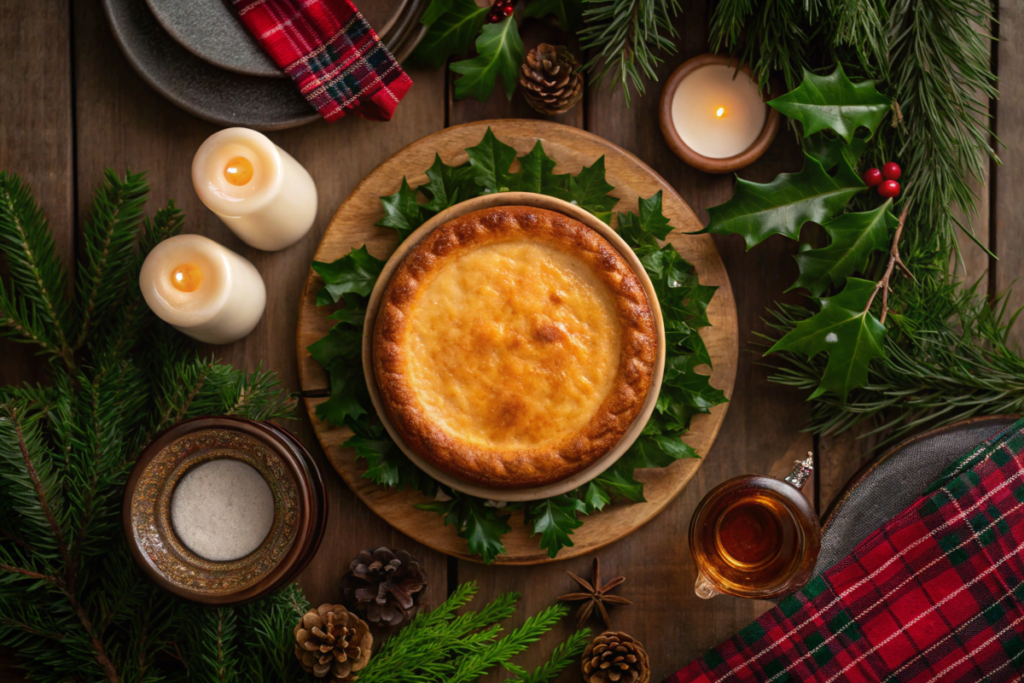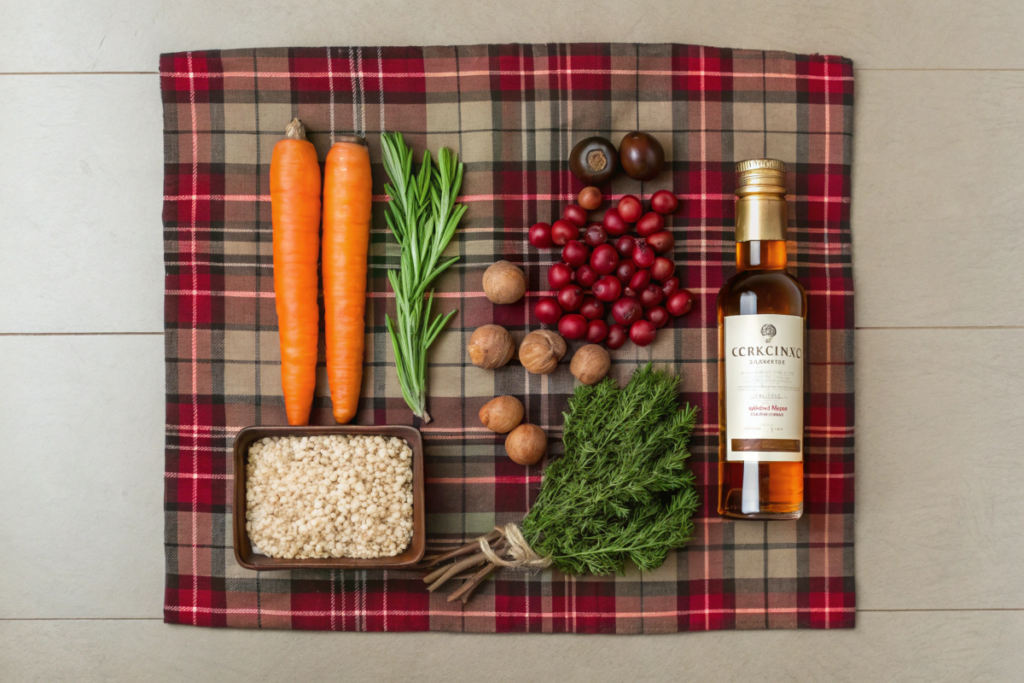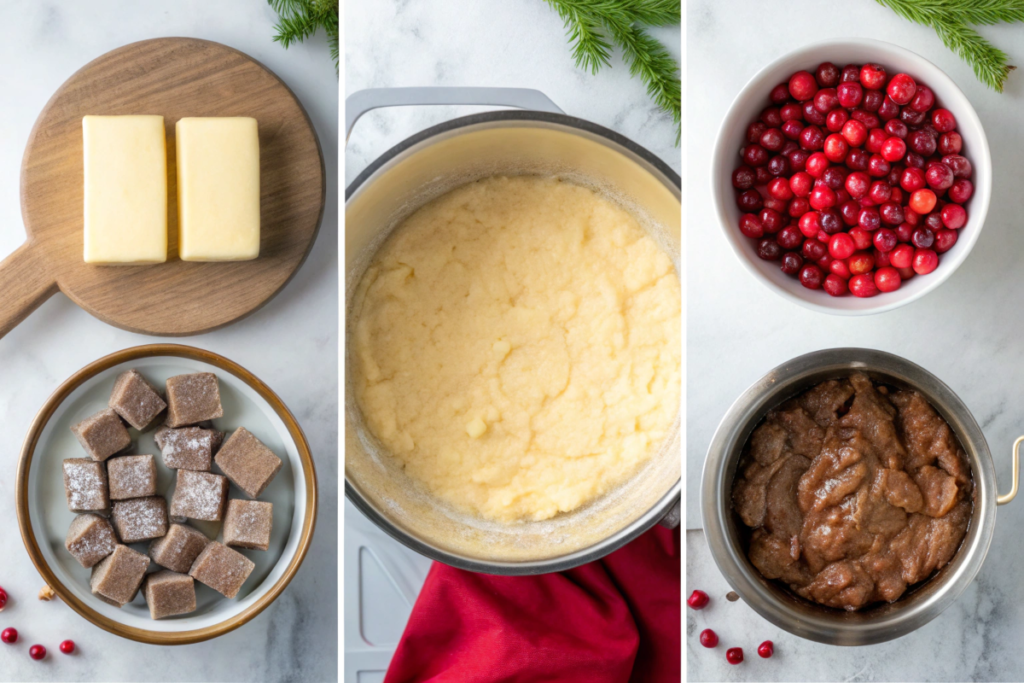Importance of Fish in Christmas Eve Traditions
The tradition of eating seven fishes on Christmas Eve is a cherished custom in Italian and Italian-American households. This practice, steeped in religious and cultural significance, highlights the importance of seafood in festive celebrations and reflects centuries-old culinary traditions. For inspiration on crafting a complete holiday meal, visit What is the Perfect Christmas Dinner?
Symbolism of the Number Seven
The number seven plays a meaningful role in the Feast of the Seven Fishes, symbolizing various aspects of Catholicism and spirituality.
- Religious Meaning:
- The seven sacraments, including baptism and communion, are central to Catholic teachings and may be represented by the seven courses of fish.
- The number seven also reflects divine perfection and completion, as seen in the Biblical account of creation.
- Cultural Interpretations:
- While the specific number of dishes may vary by family, many believe that serving seven courses adds a sacred element to the meal.
- In some interpretations, the seven courses also honor the seven virtues of faith, hope, charity, prudence, justice, temperance, and fortitude.
This numerical symbolism elevates the feast beyond a meal, connecting it to deeper spiritual themes.
Variations in Traditions Across Regions
The focus on fish during Christmas Eve varies significantly across regions, reflecting local customs and resources.
- Italy:
- Coastal areas like Naples and Sicily often include a wide array of seafood, such as fried smelts, baccala (salted cod), and calamari.
- Inland regions might feature fewer fish courses, focusing instead on pasta or vegetable-based dishes.
- Italian-American Adaptations:
- In the United States, Italian immigrants created elaborate versions of the feast, often including lobster, shrimp, and clams alongside traditional recipes.
- The availability of new ingredients allowed families to expand their menus, turning the meal into a grand celebration of heritage.
- Global Influence:
- While the Feast of the Seven Fishes is most closely associated with Italian traditions, similar customs exist in other cultures that observe meatless Christmas Eve meals.
These variations highlight the adaptability of the tradition while maintaining its central focus on seafood.
How the Custom Evolved in Modern Times
Over the years, the Feast of the Seven Fishes has evolved, blending traditional practices with contemporary influences.
- Simplified Menus:
- Many modern families opt for fewer courses while maintaining the spirit of the feast. For instance, they might prepare three or five fish dishes instead of seven.
- Creative Recipes:
- Chefs and home cooks now incorporate non-traditional seafood like sushi-grade tuna or fusion dishes that reflect diverse culinary trends.
- Broader Appeal:
- What was once a primarily Italian-American tradition has gained popularity among food enthusiasts, with restaurants offering Feast of the Seven Fishes menus during the holiday season.
This evolution allows the tradition to remain relevant while preserving its cultural and spiritual essence.
Fish holds a profound significance in Christmas Eve traditions, symbolizing faith, heritage, and adaptability. From the sacred number seven to regional and modern variations, these customs continue to unite families and communities during the holiday season.
Common Fishes in the Feast of the Seven Fishes
The Feast of the Seven Fishes features a variety of seafood dishes that reflect tradition, regional preferences, and family customs. Each type of fish has its own significance, and substitutions often depend on local availability, making the feast adaptable to different settings.
Overview of Popular Choices
Certain seafood options are staples in the Feast of the Seven Fishes, thanks to their rich flavors and historical roots in Italian cuisine:
- Baccalà (Salted Cod):
- A classic choice, baccalà is often fried or cooked in tomato sauce. Its long shelf life made it a practical option in Italy’s coastal and inland regions.
- Calamari (Squid):
- Fried or stuffed calamari is a favorite for its tender texture and versatility.
- Shrimp:
- Served grilled, fried, or in pasta dishes, shrimp adds a touch of elegance to the meal.
- Clams and Mussels:
- Often included in seafood stews or pasta dishes, these shellfish bring a briny flavor that enhances the feast.
- Anchovies:
- Typically used in appetizers or sauces, anchovies are a flavorful addition that ties back to Italy’s Mediterranean heritage.
- Smelts:
- Small, fried fish are popular for their crispy texture and simplicity.
- Lobster:
- A more luxurious option, lobster is often included in modern adaptations of the feast.
Significance of Each Fish in the Feast
The inclusion of specific fish often carries cultural and symbolic meaning.
- Baccalà (Salted Cod):
- Represents endurance and the ability to adapt, reflecting its importance in Italy’s history.
- Calamari (Squid):
- Symbolizes abundance and prosperity, making it a meaningful addition to the feast.
- Clams and Mussels:
- Their shells are often seen as a sign of protection, linking them to themes of security and shelter.
- Shrimp:
- Often associated with luxury and celebration, shrimp adds a festive touch to the meal.
- Anchovies:
- As a staple of Mediterranean cuisine, anchovies symbolize simplicity and tradition.
Including a variety of fish allows families to honor both cultural and religious traditions.
Substitutes Based on Local Availability
Not all traditional seafood options are accessible in every region, but substitutes ensure the feast remains inclusive and flavorful.
- Substitutes for Baccalà:
- Fresh cod or haddock can replace baccalà, offering similar textures and flavors without the curing process.
- Substitutes for Calamari:
- Squid rings or cuttlefish provide a comparable alternative.
- Substitutes for Shellfish:
- If clams or mussels are unavailable, use scallops or oysters to add similar briny flavors.
- Substitutes for Smelts:
- Whitebait or small sardines make excellent replacements for fried smelts.
Adapting the menu ensures the spirit of the feast is preserved, regardless of location or ingredient availability.
The Feast of the Seven Fishes celebrates variety and tradition through its diverse seafood offerings. Whether you follow classic recipes or adapt them with local substitutes, the inclusion of these dishes adds depth, flavor, and meaning to the holiday celebration.
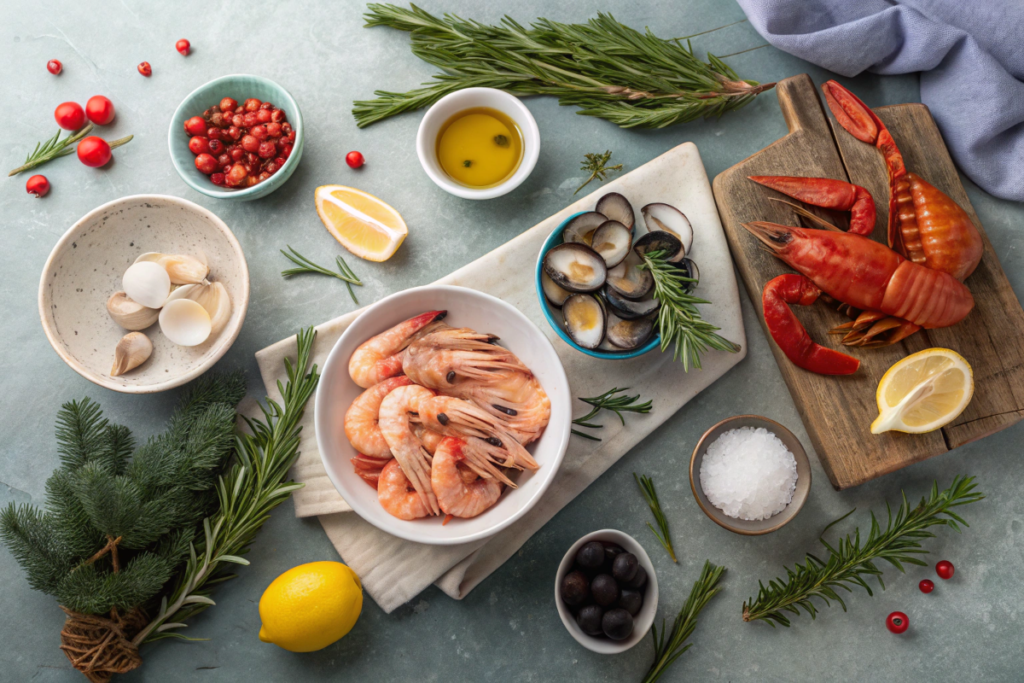
Baccalà (Salted Cod)
Baccalà, also known as salted cod, is a staple in the Feast of the Seven Fishes. It stands out for its cultural importance and versatility, making it a beloved dish during Christmas Eve celebrations. Families enjoy preparing it using methods that highlight its unique flavor and texture.
Preparation Methods
To make baccalà, you need to follow specific steps to ensure it tastes its best.
- Soaking the Fish:
- Start by soaking baccalà in cold water for 24 to 48 hours. Change the water every 6–8 hours to remove the excess salt.
- Cooking Techniques:
- Frying: Coat the fish lightly in batter or breadcrumbs, then fry it until golden and crispy.
- Stewing: Cook baccalà in a rich tomato sauce with olives and capers for a bold, hearty dish.
- Baking: Layer the fish with potatoes, onions, and fresh herbs before baking it for a flavorful and comforting meal.
Each cooking style adds a distinct flavor, allowing families to personalize the dish according to their preferences.
Regional Recipes for Baccalà
Italian regions offer a variety of ways to prepare baccalà, reflecting the diversity of local flavors.
- Veneto:
- Baccalà alla Vicentina features cod slow-cooked with milk, onions, and anchovies, resulting in a creamy and flavorful dish.
- Sicily:
- Sicilian recipes often include tomatoes, olives, and capers, creating bold, tangy flavors that highlight the Mediterranean influence.
- Naples:
- Neapolitan baccalà is either fried to a crispy perfection or cooked in a tomato-based sauce with potatoes, providing a hearty and comforting option.
- Calabria:
- Calabrians bake their baccalà with spicy hot peppers and garlic, offering a dish that reflects their love for bold and fiery flavors.
These regional variations allow families to celebrate their unique heritage while enjoying a shared tradition.
Clams
Clams are a versatile and flavorful addition to the Feast of the Seven Fishes. They bring a briny freshness to the table and are used in various traditional dishes, making them a favorite among seafood lovers during Christmas Eve celebrations.
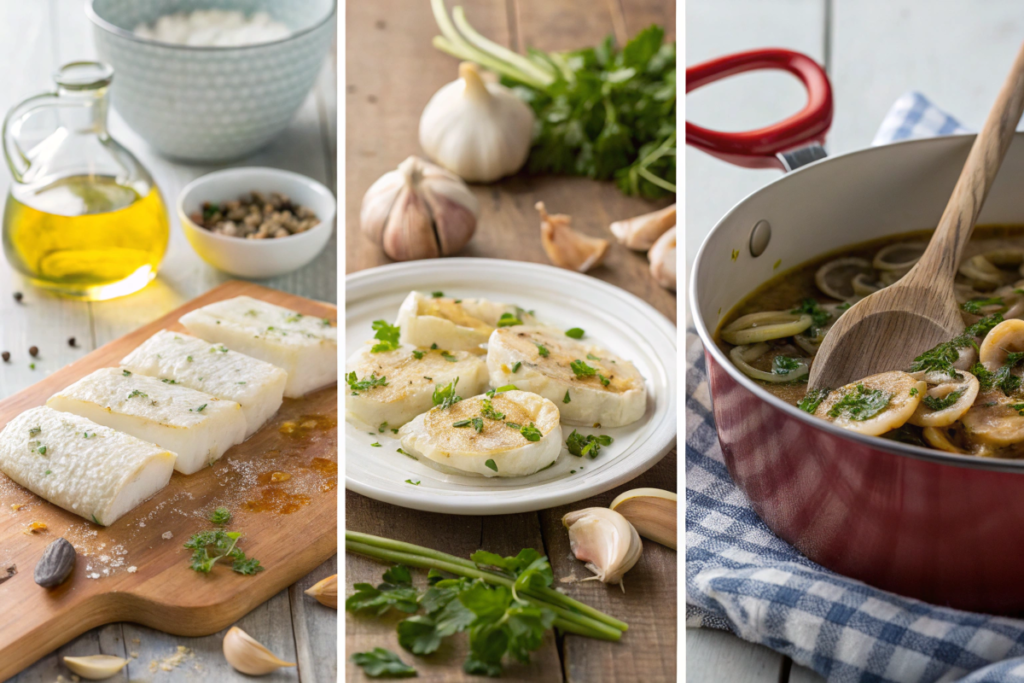
How Clams Are Incorporated into the Feast
Clams are often featured in pasta dishes, soups, or served simply steamed to showcase their natural flavor.
- Versatility:
- Clams pair well with other ingredients like garlic, white wine, and fresh herbs, making them adaptable for a range of dishes.
- Symbolism:
- In the feast, clams can represent the abundance of the sea, aligning with the celebration’s focus on seafood.
Incorporating clams adds both flavor and cultural depth to the meal.
Popular Clam-Based Dishes
Clam-based recipes are staples in many families’ versions of the Feast of the Seven Fishes.
- Linguine with Clam Sauce:
- A classic dish that combines tender clams with a garlic and white wine sauce tossed over al dente pasta.
- Variations may include crushed red pepper for a spicy kick or chopped parsley for freshness.
- Stuffed Clams:
- Large clams are filled with a savory mixture of breadcrumbs, herbs, and spices, then baked until golden.
- Clam Chowder:
- A creamy or tomato-based soup featuring clams, potatoes, and vegetables, perfect for warming up on Christmas Eve.
These dishes highlight the versatility of clams, making them a standout ingredient in the feast.
Calamari (Squid)
Calamari, or squid, holds a special place in the Feast of the Seven Fishes. It is cherished for its tender texture, versatility, and ability to pair with a variety of flavors. This seafood favorite adds depth and variety to the Christmas Eve celebration.
Role of Calamari in the Feast
Calamari often serves as an appetizer or a main dish, making it a key component of the feast.
- Symbol of Abundance:
- Calamari represents the richness of the sea, which aligns with the feast’s focus on celebrating seafood.
- Cultural Tradition:
- Families include calamari to honor traditional recipes while creating a diverse and satisfying menu.
Its versatility ensures calamari remains a favorite in many households during the holidays.
Common Calamari Dishes
Families prepare calamari in several ways, each showcasing its unique texture and flavor.
- Fried Calamari:
- Lightly breaded and fried calamari is crispy, tender, and immensely popular. Families often serve it as an appetizer with marinara sauce or lemon wedges.
- This dish is quick to prepare, making it a practical and delicious option.
- Stuffed Calamari:
- Whole squid is filled with a savory mixture of breadcrumbs, garlic, and parsley, then baked or simmered in tomato sauce.
- This hearty dish is both flavorful and visually appealing, perfect for special occasions.
- Calamari in Tomato Sauce:
- Sliced squid is cooked in a rich tomato-based sauce with garlic, onions, and fresh herbs.
- Served as a standalone dish or paired with pasta, it highlights calamari’s ability to absorb and enhance bold flavors.
These dishes emphasize the versatility of calamari, allowing families to enjoy it in both traditional and creative ways.
Shrimp
Shrimp is a versatile ingredient that plays a key role in the Feast of the Seven Fishes. Its delicate flavor and quick cooking time make it perfect for a variety of dishes, ensuring it fits seamlessly into any festive menu.
Versatility of Shrimp Dishes
Shrimp can be used in many ways, allowing cooks to prepare it as an appetizer, in soups, or as part of a main course.
- Appetizers: Shrimp cocktail, served with a tangy sauce, is a timeless favorite. Additionally, grilled shrimp skewers offer a modern and flavorful option.
- Soups and Stews: Shrimp adds depth to seafood bisques and chowders. Furthermore, it enhances the richness of hearty stews filled with vegetables and aromatic herbs.
- Main Dishes: Shrimp works well in pasta, rice, or as a standalone dish. For instance, shrimp tossed in a creamy sauce or stir-fried with garlic makes a quick and satisfying meal.
Classic Shrimp Preparations
One of the most beloved shrimp dishes is shrimp scampi, known for its simplicity and bold flavors.
- Shrimp Scampi:
- In this dish, shrimp is sautéed in garlic, butter, and white wine to create a flavorful sauce. Tossing it with pasta enhances its appeal, while a squeeze of lemon brightens the taste.
- Its quick preparation and rich flavor make shrimp scampi a go-to for holiday feasts.
Shrimp’s adaptability ensures it remains a favorite in festive celebrations.
Scallops
Scallops are a luxurious addition to the Feast of the Seven Fishes, known for their delicate texture and natural sweetness. They elevate the menu with their elegance, making them a popular choice for festive meals.
How Scallops Add a Touch of Luxury
Scallops are often associated with fine dining, and their inclusion in holiday feasts adds a sense of sophistication.
- Premium Ingredient: Their tender texture and rich flavor make scallops feel indulgent, perfect for special occasions like Christmas Eve.
- Quick Cooking Time: Scallops require minimal time to prepare, making them a convenient option for busy holiday kitchens.
Adding scallops to the menu enhances the overall experience, making the meal memorable and impressive.
Popular Recipes Featuring Scallops
Scallops are versatile and can be prepared in various ways, from simple to elaborate dishes.
- Seared Scallops:
- Pan-searing scallops in butter creates a golden crust while preserving their tender interior. Adding a squeeze of lemon brings out their natural sweetness.
- Scallop Risotto:
- This dish combines creamy risotto with perfectly cooked scallops, offering a rich and satisfying main course.
- Bacon-Wrapped Scallops:
- Wrapping scallops in crispy bacon adds a smoky flavor that complements their sweetness, making this a crowd-pleasing appetizer.
These recipes highlight scallops’ versatility and ability to adapt to different flavor profiles.
Mussels
Mussels are a popular and flavorful addition to the Feast of the Seven Fishes. They are easy to prepare, versatile, and nutritious, making them a go-to ingredient for holiday celebrations. Their natural brininess pairs beautifully with a variety of sauces and cooking methods.
Why Mussels Are a Favorite
Mussels are favored for several reasons, which make them a staple in seafood feasts.
- Quick to Cook: They require only a few minutes of steaming or simmering, making them ideal for busy kitchens during the holidays.
- Adaptable to Flavors: Mussels absorb the seasonings and sauces they are cooked in, allowing them to blend seamlessly into many recipes.
- Nutritious and Affordable: In addition to being rich in protein, vitamins, and minerals, mussels are budget-friendly, ensuring they fit both taste and cost needs.
Furthermore, their ability to enhance the flavor of any dish adds to their appeal.
Recipes Featuring Mussels
Mussels can be prepared in numerous ways, offering a variety of flavors and textures.
- Mussels Marinara:
- To make this dish, simmer mussels in a robust tomato marinara sauce infused with garlic, onions, and fresh herbs. Serve the dish with crusty bread for dipping into the savory sauce.
- Steamed Mussels:
- Steam mussels in a mix of white wine, garlic, and butter. This simple method highlights their natural taste. Adding parsley and a squeeze of lemon elevates the dish further.
- Mussels in Cream Sauce:
- For a richer option, cook mussels in a creamy garlic sauce with shallots and white wine. Pair this luxurious dish with pasta or rice for a complete meal.
These recipes demonstrate how mussels can adapt to different cooking styles and flavor profiles.
Anchovies
Anchovies are an essential part of the Feast of the Seven Fishes, celebrated for their bold flavor and versatility. These small fish serve as both a key ingredient and a flavor enhancer, adding depth and richness to a variety of dishes. Their unique taste and culinary adaptability make them indispensable in traditional holiday cooking.
Anchovies as an Essential Flavoring Ingredient
Anchovies are widely used in holiday recipes for their ability to elevate flavors effortlessly.
- Rich and Savory Taste: Anchovies provide a strong umami flavor, blending seamlessly into sauces and dressings without overpowering the dish.
- Versatile Applications: They work well in pasta, pizzas, marinades, and even soups. Moreover, their salty profile complements both simple and complex recipes.
- Health Benefits: Anchovies are rich in omega-3 fatty acids, protein, and essential minerals, making them a nutritious choice in addition to being flavorful.
By enhancing the overall flavor profile of dishes, anchovies add a subtle yet impactful touch to the feast.
Popular Recipes Featuring Anchovies
Anchovies shine in a variety of dishes, whether they play a starring role or serve as a flavorful base.
- Anchovy Pasta:
- This simple dish combines anchovies, olive oil, garlic, and chili flakes to create a savory sauce for spaghetti. A sprinkle of parsley and a squeeze of lemon elevate the flavors further.
- Caesar Salad Dressing:
- Anchovies are a cornerstone of Caesar dressing, providing the signature salty and savory taste that balances the tangy and creamy components.
- Anchovy Pizza:
- Traditional anchovy-topped pizza pairs their salty taste with rich tomato sauce and melted cheese, creating a well-rounded flavor profile.
- Bagna Cauda:
- This warm Italian dip, made with anchovies, garlic, and olive oil, is perfect for pairing with fresh vegetables or crusty bread. Its simplicity highlights the depth anchovies can bring to a dish.
These recipes showcase the versatility of anchovies and their ability to enhance both simple and elaborate meals.
Lobster
Lobster is often the centerpiece of the Feast of the Seven Fishes, offering a luxurious and celebratory touch to the holiday table. Its tender meat and rich flavor make it a show-stopping dish that embodies indulgence and festivity.
Lobster as a Show-Stopping Dish
Lobster is synonymous with special occasions, and its inclusion in holiday feasts elevates the dining experience.
- Visual Appeal: The vibrant red shell of cooked lobster creates a stunning presentation, making it an eye-catching centerpiece.
- Rich Flavor: Lobster’s tender, succulent meat delivers a unique sweetness that stands out among other seafood options.
- Symbol of Luxury: Serving lobster signifies celebration and abundance, adding a sense of grandeur to the feast.
Including lobster in the Feast of the Seven Fishes not only satisfies the palate but also enhances the festive atmosphere.
Regional Lobster-Based Recipes
Lobster can be prepared in various ways, with regional influences shaping traditional recipes.
- Lobster Fra Diavolo (Italian-American):
- This spicy dish features lobster cooked in a bold tomato sauce with garlic, onions, and chili flakes. It is often served over pasta, blending heat and richness for a memorable main course.
- Steamed Lobster (New England):
- Steaming lobster preserves its natural sweetness and delicate texture. Served with melted butter and lemon, this simple preparation highlights its fresh flavor.
- Lobster Bisque (French Influence):
- A creamy soup made with lobster meat, stock, and a touch of cream, lobster bisque is both comforting and indulgent.
- Grilled Lobster (Coastal Cuisine):
- Grilling adds a smoky flavor to lobster, making it a flavorful alternative to traditional steaming or boiling.
These regional variations showcase lobster’s versatility and its ability to adapt to different culinary traditions.
FAQs About The Seven Fishes Holiday Feast
What is the origin of the seven fishes?
The tradition originates from Italian-American culture and represents religious and family customs. Additionally, it reflects the Catholic practice of abstaining from meat on Christmas Eve.
Do you have to serve seven types of fish?
No, the feast is flexible. While some families stick to the tradition of seven dishes, others choose fewer or more based on their preferences. Furthermore, the types of seafood can vary widely.
What are some easy recipes for beginners?
Simple dishes like shrimp scampi, baked cod, or mussels marinara are excellent for those just starting. Moreover, these recipes require minimal ingredients and preparation time, making them perfect for newcomers.
Conlusion
The Feast of the Seven Fishes celebrates tradition, family, and the richness of seafood. Preserving this meaningful custom connects us to our heritage while creating cherished memories. Feel free to experiment with recipes and flavors to make the feast uniquely your own.

